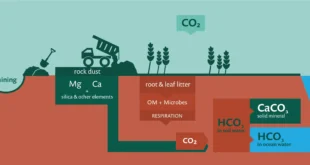- In a bid to make India’s $10 billion chip-making initiative more attractive to investors, the Centre on September 21, approved changes to the scheme for the development of a semiconductor and display manufacturing ecosystem.
- Semiconductors are the thumbnail-sized building blocks of almost every modern electronic device from smartphones toconnected devices in the Internet of Things (IoT).
- They help give computational power to devices. The global semiconductor industry is currently valued at $500-$600 billion.
Semiconductor Chip
- The basic component of a semiconductor chip is a sliver of silicon, which is etched with billions of microscopic transistors, forming patterns to control the flow of current while following different computational instructions.
- The chip-making process is complex and highly exact, having multiple other steps in the supply chain such as designing software for chips and patenting them through core Intellectual Property (IP) rights.
- It also involves making chip-fabrication machines; setting up fabs or factories; and ATMP (assembly, testing, marking and packaging).
- The chip-making industry is a highly-concentrated one, with the big players being Taiwan, South Korea and the U.S. among others.
- In fact, according to a New York Times estimate, 90% of 5nm (nanometre) chips are mass-produced in Taiwan, by the Taiwan Semiconductor Manufacturing Company (TSMC).
- Therefore, the global chip shortage, U.S.-China tensions over Taiwan, and the supply chain blockages owing to the Russia-Ukraine conflict have led major economies to enter the chip-making sector with a renewed push.
- For example, the U.S. announcement of $52.7 billion in government funding for the CHIPS and Science Act and the EU’s Chips Act that will mobilise €43 billion for public and private investments.
Changes to India’s Chip-Making Scheme
- In December 2021, India announced its roughly $10 billion dollar production-linked incentive (PLI) scheme to encourage semiconductor and display manufacturing in the country.
- It also announced fiscal support for a design-linked initiative (DLI) scheme to drive global and domestic investment related to design software, IP rights etc.
- According to the Electronics and IT Ministry, semiconductor demand in India would increase to $70-$80 billion by 2026 with the growing demand for digital devices and electronic products.
- The new changes announced last Wednesday seek to harmonise government incentives for all technology nodes of semiconductors, according to the Minister of State for Electronics and IT Rajeev Chandrasekhar.
- In the previous version of the scheme, the Centre was offering to fund 30% of the project cost for 45nm to 65nm chip production, 40% for 28nm to 45nm, and 50% or half of the funding for chips 28nm or below.
- The modified scheme provides uniform 50% fiscal support for all nodes. Besides, it will provide 50% of capital expenditure for other steps of the process as well (chip design and ATMP).
- So far, Vedanta and Taiwanese chipmaker Foxconn have signed an MoU to set up a ₹1,54,000 crore semiconductor plant in Gujarat.
- Two other projects have also been announced — a $3 billion plant in Karnataka by the International consortium ISMC and a $3.5 billion plant in Tamil Nadu by Singapore’s IGSS Ventures.
- The modified scheme also emphasised the production of the 45nm chip, which is fairly less time-consuming and economical in terms of production.
Challenges:
- While the scheme is an encouraging move, chip production is a resource-intensive and expensive process.
- While the new scheme provides equal funding for all steps of the process, the outlay of the scheme remains $10 billion.
- Notably, just the setting up of one semiconductor fab requires an investment of anywhere between $3 and $7 billion.
- Analysts, while positive, are concerned that not much of the current scheme outlay would be left to support other elements including display fabs, packaging and testing facilities, and chip design centres.
- They also argue that the initial funding should focus on areas like design and R&D, for which India already has an established talent pool.
- Chip-making also requires gallons of ultrapure water in a single day, which experts say, could be a task for the government to provide to factories, compounded also by the drought conditions which often prevail in large parts of the country.
- Another task for the government is to drive up consumer demand in the semiconductor and linked electronics industry to not end up in a situation where these ventures remain successful only till taxpayers are forced to fund required subsidies
SOURCE: THE HINDU,THE ECONOMIC TIMES,MINT
 Chinmaya IAS Academy – Current Affairs Chinmaya IAS Academy – Current Affairs
Chinmaya IAS Academy – Current Affairs Chinmaya IAS Academy – Current Affairs



